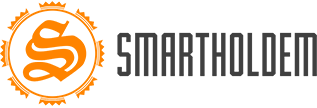Rising Geriatric Population Influencing Injectable Drug Delivery Market Dynamics
-
The global injectable drug delivery market is experiencing an unprecedented surge in growth, with the market size valued at USD 838.43 billion in 2024. This robust expansion is expected to continue, reaching USD 900.81 billion in 2025 and soaring to USD 1,599.90 billion by 2032, growing at a Compound Annual Growth Rate (CAGR) of 8.55% over the forecast period. With growing healthcare needs and increasing prevalence of chronic diseases, injectable drug delivery systems have become an indispensable component of the modern pharmaceutical industry.
Market Overview
Injectable Drug Delivery Systems Market, There are devices and formulations that facilitate the administration of drugs directly into the body, typically via intravenous, intramuscular, or subcutaneous routes. These systems ensure accurate dosing, fast action, and improved bioavailability of therapeutic agents. The market’s growth is primarily driven by the increasing demand for self-administered drugs, advancements in biologics, and the rising prevalence of autoimmune diseases, diabetes, and cancer.
Pharmaceutical companies and healthcare providers are increasingly adopting injectable solutions due to their ability to deliver complex biologic molecules efficiently. Furthermore, the emergence of innovative delivery devices such as auto-injectors, pen-injectors, and prefilled syringes is revolutionizing patient care by enhancing convenience and compliance.
Key Market Trends
• Rising Adoption of Biologics: A surge in biologic drug development for chronic diseases such as rheumatoid arthritis and cancer is driving the use of injectable drug delivery systems.
• Technological Advancements: Smart injectors and needle-free injection technology are improving safety, accuracy, and patient comfort.
• Home Healthcare Trend: There is a growing shift toward home-based care, supported by easy-to-use injectable devices.
• Demand for Long-Acting Injectables (LAIs): These are gaining traction in treating psychiatric disorders and hormonal imbalances due to reduced dosing frequency.
Market Demand Drivers
• Increasing Chronic Disease Burden: A global rise in diabetes, cardiovascular disorders, and cancer is propelling demand for injectable treatments.
• Elderly Population Growth: The aging demographic often requires more medical interventions, including injectable medications.
• Preference for Targeted Drug Delivery: Healthcare systems prefer methods that reduce systemic side effects, and injectables offer targeted delivery.
• Expansion of Biopharmaceutical R&D: A significant investment in research and development is creating new injectable therapeutics.
Market Dynamics
The injectable drug delivery market is characterized by rapid innovation, strong competition, and high investment in biologics and device technologies. Regulatory frameworks are evolving to accommodate new delivery formats, especially those focusing on patient self-administration and safety.
Drivers:
• High patient compliance with injectable formats
• Increasing biologics and biosimilars usage
• Advanced delivery device penetration in developed countries
Restraints:
• High manufacturing and storage costs
• Risk of infection and needle-stick injuries
• Stringent regulatory approvals for new devices
Future Outlook
The future of the injectable drug delivery market is poised for continued transformation and growth:
• Emergence of Wearable Injectors: These are set to dominate in treating chronic illnesses, enabling continuous or scheduled drug release.
• Digital Health Integration: Injectables paired with mobile health apps and data-tracking devices will provide personalized care and remote monitoring.
• Growth in Emerging Markets: Countries in Asia-Pacific, Latin America, and Africa are witnessing increased healthcare access, thus expanding injectable drug markets.
• Sustainable and Eco-friendly Packaging: Environmental concerns are pushing innovation in biodegradable and recyclable injector materials.
Key Market Players
The market features a robust competitive landscape with several major players actively investing in product innovation and strategic collaborations:
• Pfizer Inc.
• Johnson & Johnson
• Amgen Inc.
• Becton, Dickinson and Company (BD)
• Eli Lilly and Company
• Baxter International Inc.
• Gerresheimer AG
• Teva Pharmaceutical Industries Ltd.
• Sanofi
• SCHOTT AG
These companies are focusing on expanding their injectable portfolios, developing new delivery technologies, and entering emerging markets to strengthen their global footprint.
Market Segmentation
The global injectable drug delivery market is segmented by:
By Device Type:
• Conventional Syringes
• Prefilled Syringes
• Auto-injectors
• Pen-injectors
• Wearable Injectors
By Formulation:
• Conventional Drug Formulations
• Biologics
• Vaccines
By Application:
• Oncology
• Autoimmune Disorders
• Hormonal Disorders
• Infectious Diseases
• Cardiovascular Disorders
By End-User:
• Hospitals
• Homecare Settings
• Clinics
• Ambulatory Surgical Centers (ASCs)
Recent Developments
• April 2025: A leading biopharma company launched a smart wearable injector capable of real-time data transmission to physicians.
• March 2025: A collaboration between a biotech startup and a medical device manufacturer introduced needle-free injection devices for pediatric use.
• January 2025: Several firms expanded manufacturing capabilities in India and China to meet rising demand and reduce supply chain constraints.
• December 2024: FDA approved a long-acting insulin delivered through an auto-injector, enhancing diabetic patient adherence.
Regional Analysis
• North America: Holds the largest market share, driven by advanced healthcare infrastructure, high chronic disease prevalence, and continuous R&D investments.
• Europe: Significant growth due to supportive regulatory policies and the adoption of innovative drug delivery devices.
• Asia-Pacific: Expected to witness the fastest growth, fueled by increasing healthcare expenditure, urbanization, and large patient populations in China, India, and Southeast Asia.
• Latin America & Middle East & Africa: Steady growth supported by healthcare reforms, expanding pharmaceutical sectors, and growing access to injectable therapeutics.
Get Full Detailed PDF Report: https://www.kingsresearch.com/injectable-drug-delivery-market-2127
